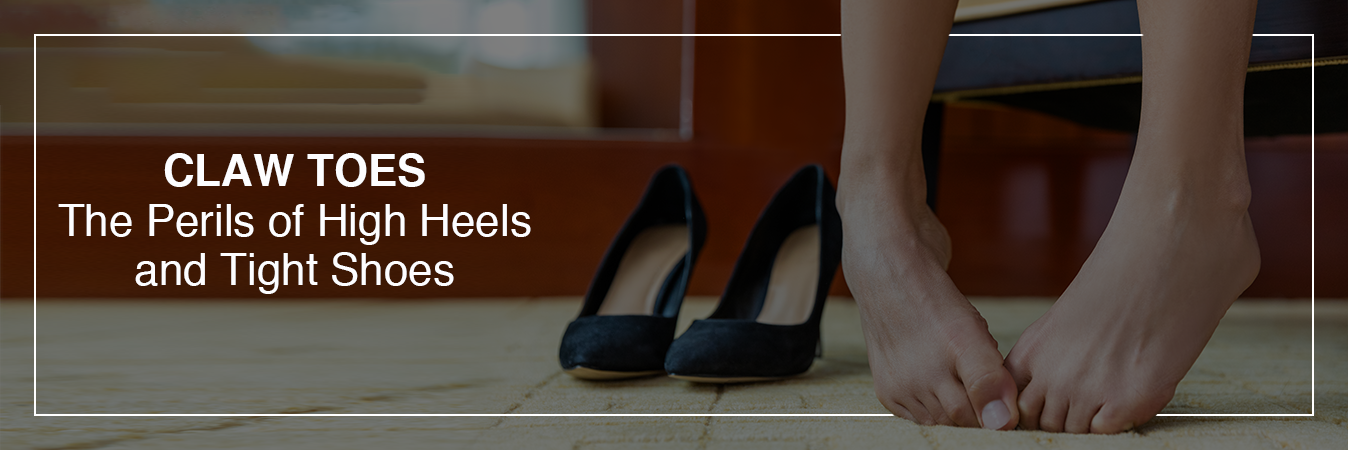Wearing high heels and tight-fitted shoes can be a real feast to your party or office look, but is it equally desirable to your feet and toes? We are afraid but the answer is NO. Wearing these shoes and heels can be perilous to your feet.
Continuous and stretched hours of wearing tight and high heel shoes can lead to various deformities in the forefoot. One of these is the CLAW TOES. Claw toes is a common deformity of the front part of the foot that leaves the toes curled downwards, which resembles little claws. The reason for this can be weakening of foot muscles leading to imbalance because of high and tight shoes. This condition becomes worse eventually and may also shift into a permanent deformity.
Choose Your Size Wisely
The style of the shoe has a never-ending impact on foot deformity and its severities. Ill-fitted shoes are often the cause of these deformities. High-heel shoes force all the body weight to the ball of the foot and forefoot and tight shoes can squeeze the toes, which weakens the muscles, creates imbalance that causes claw toes. With advancement in age, prevalence of this deformity increases and is observed majorly in 70’s or 80’s.
In some cases, other foot deformities, muscle weakness, diabetes, arthritis are also responsible for claw toes. ‘Rheumatoid Arthritis‘ (RA) has also been seen as a reason for the development of claw toe deformity. This is especially seen in women. Many people develop bunions ( a bony bump at the base of the big toe), callus (thickened layers of skin) and claw toes. Dr Raju Vaishya, President of Indian Cartilage Society & Arthritis Care Foundation, says, “the number of problems from the ankle to the toes causes pain in the whole foot. Gradually the person may start avoiding standing or walking.” This situation can cause significant pain and discomfort in wearing shoes.
Major complication can be noticed if toes are not significantly unpressurised. Starting from a flexible toe deformity, over time it may change into rigid claw toes. In this situation the second toe may cross over the first, and be dislocated at the base of the second toe. The corns, round areas of thickened skin on your toes and feet that develop due to repeated pressure on the skin, may lose their ability to protect the toe and breakdown forming ulcers. This makes it more challenging to be treated. As Dr Raju Vaishya believes, a combination of medical intervention , physiotherapy and home care is recommended to treat claw toes, which differs with severity and rigidity of the deformity. As this deformity is a major consequence of ill-fitting shoes, custom fitted shoes can ease a lot of pressure off the patient’s toes. Shoes with plenty of toe space, Comfortable fitting can help alleviate the discomfort and pain in the foot. Specially designed shoes accommodate the toe in the extra deep area and also has a special pad to help remove pressure from the ball of the foot. In extreme cases where the deformity is un-noticed with rigid toes, surgery is performed. The bone at the base of the toe is shortened so that it gets more space to straighten out. The toes may take up to six-eight months to heal after undergoing the surgery.


